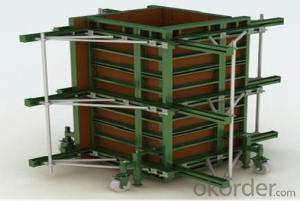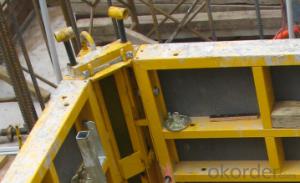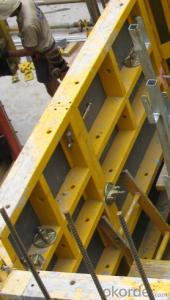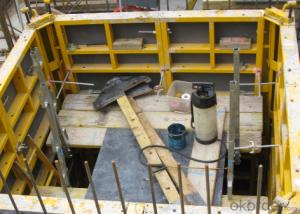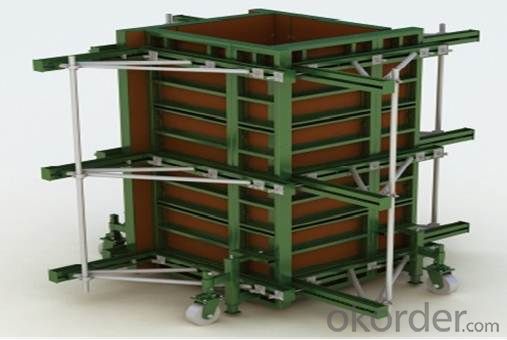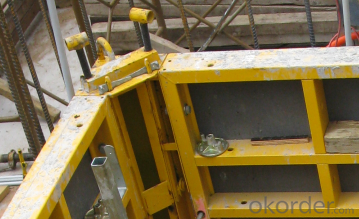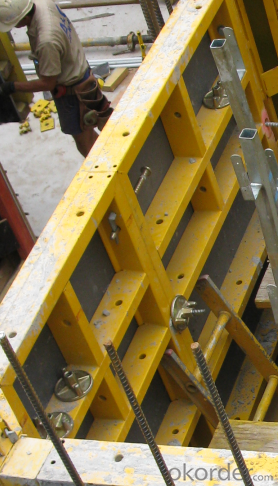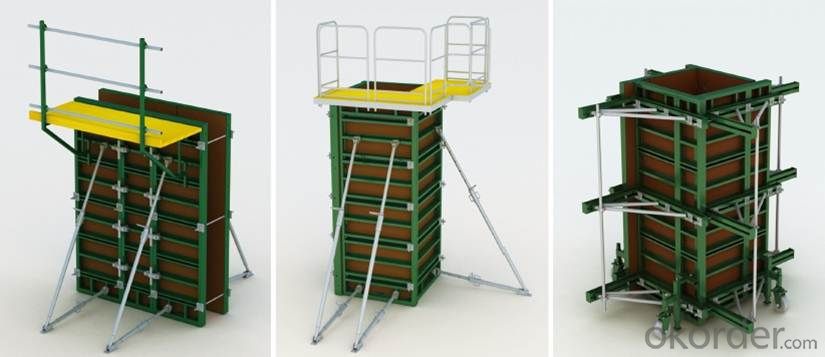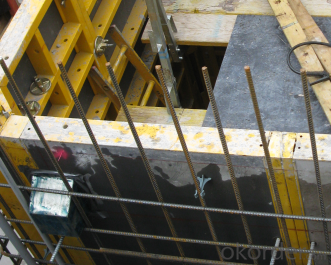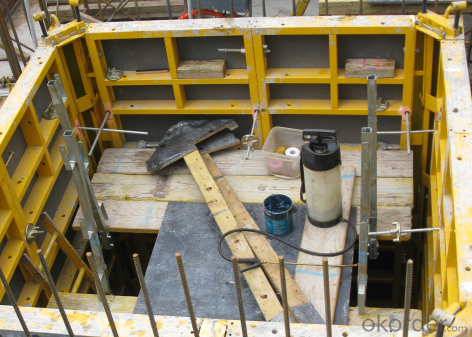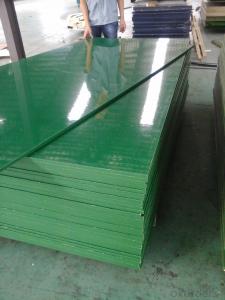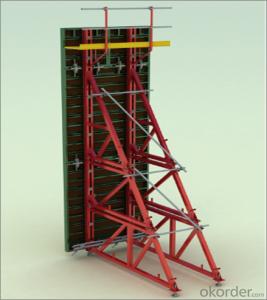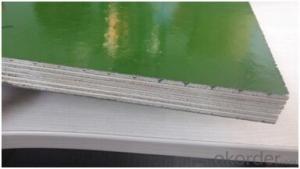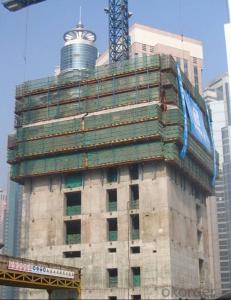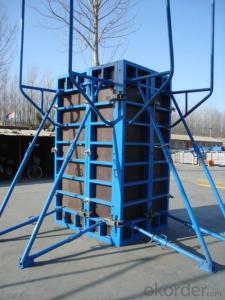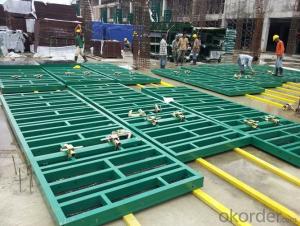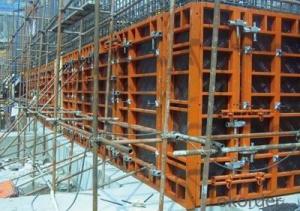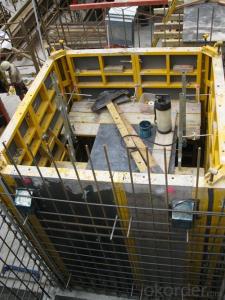COLUMN STEEL FRAMED FORMWORK FOR LIFT SHAFT
- Loading Port:
- Shanghai
- Payment Terms:
- TT OR LC
- Min Order Qty:
- 1000 m²
- Supply Capability:
- 100000 m²/month
OKorder Service Pledge
OKorder Financial Service
You Might Also Like
1. Structure of 120 Steel Framed Formwork Description
Single-side bracket is a kind of formwork for the concrete pouring of single-side wall. The construction is easy and fast. The components have good standard performance and versatility. The pouring height is adjustable, the maximum height of a single pouring is 8.9m.The formwork is always used in the concrete pouring of basement, subway, Sewage treatment factory and so on. The waterproof of the finished wall is excellent
2. Main Features of 120 Steel Framed Formwork
-easy to assemble
-simple structure.
-and convenient for transportation
-convenient for storage.
3. 120 Steel Framed Formwork Images
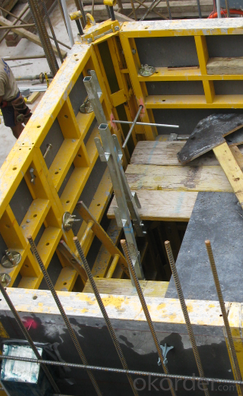
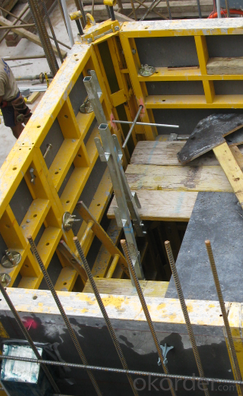
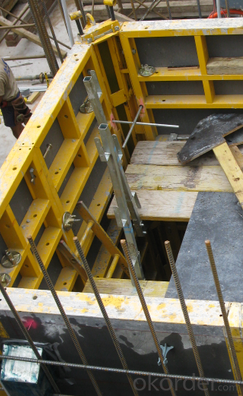
4. Single-side Steel Framed Formwork Specifications
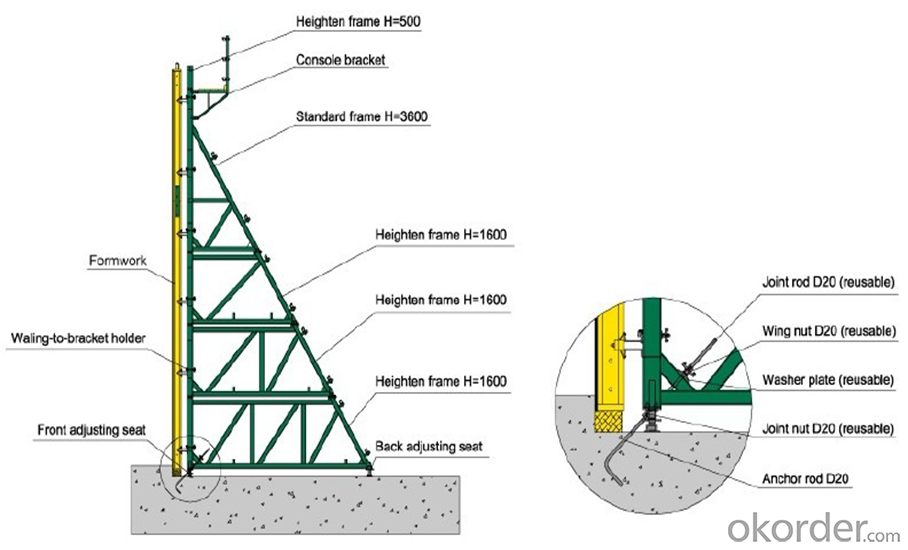
5.FAQ of 120 Steel Framed Formwork
1) What can we do for you?
.We can ensure the quality of the 120 steel framed formwork and avoid extra expenses for customers.
.We can provide you the professional technical team.
.We can provide professional building proposal for your project.
. Please feel free to customize.
2) What promises can be done by us?
. If interested in single side steel framed formwork, please feel free to write us for any QUOTE.
. If need any technical and building assistance, we could provide on-site professional staff for instruction.
. Please DO check goods when courier knocks your door and contact us asap if any issueS.
3) What about of our after-sale service?
. Response will be carried out in 24hours after receiving any complain or request.
. Single side steel framed formwork cost can be refund after order is confirmed.
. If the products are not based on the requirements, there will be the relevant compensations made for you.
4) What about the package and shipping time?
.Packing: wood package and
.Shipping: by sea
Shipping time: Normally small orders, it just1week business days to arrive your hand; When comes to the customs declaration, it may need 2 weeks.
- Q: How does steel frame formwork differ from traditional formwork systems?
- Steel frame formwork differs from traditional formwork systems in several ways. Firstly, steel frame formwork is made up of steel panels that are connected together to create a sturdy and durable structure. This makes it ideal for use in high-rise buildings or structures that require a large amount of concrete to be poured. Traditional formwork systems, on the other hand, are typically made from timber or plywood, which may not be as strong or durable as steel. Additionally, steel frame formwork is designed to be reusable. Once a concrete pour is complete, the formwork panels can be easily dismantled and reassembled for use on another project. Traditional formwork systems, on the other hand, are often single-use and need to be discarded after each project, resulting in additional costs for materials and waste disposal. Furthermore, steel frame formwork allows for greater flexibility in design. The steel panels can be easily adjusted and customized to fit different shapes and sizes, making it suitable for a wide range of construction projects. Traditional formwork systems, on the other hand, are often limited in terms of design flexibility and may require additional time and effort to create complex shapes or structures. In terms of efficiency, steel frame formwork offers several advantages. The steel panels can be quickly and easily assembled, reducing the construction time and labor required. Additionally, the smooth surface of the steel panels helps to achieve a high-quality finish on the concrete, eliminating the need for additional finishing processes. Overall, steel frame formwork is a more modern and efficient alternative to traditional formwork systems. Its strength, reusability, flexibility, and efficiency make it a preferred choice for many construction projects.
- Q: Can steel frame formwork be used for airport terminals?
- Yes, steel frame formwork can be used for airport terminals. Steel frame formwork is a versatile and robust construction method that is commonly used for large-scale projects, such as airport terminals. It offers several advantages for airport construction, including a high load-bearing capacity, durability, and the ability to withstand extreme weather conditions. Steel frame formwork allows for the efficient construction of complex and intricate structures, which is often required in the design of modern airport terminals. Additionally, steel frame formwork offers flexibility in terms of design modifications and can be easily dismantled and reused for future projects, making it a cost-effective solution for airport construction. Overall, steel frame formwork is a suitable choice for building airport terminals, offering the necessary strength, durability, and adaptability required for such complex structures.
- Q: How does steel frame formwork help in reducing formwork assembly time?
- Steel frame formwork helps in reducing formwork assembly time because it is a prefabricated system that can be easily assembled and disassembled. The steel frames provide stability and support, allowing for faster and more efficient installation of formwork panels. Additionally, the use of steel frame formwork eliminates the need for traditional timber formwork, which requires time-consuming cutting and shaping. Overall, steel frame formwork offers a quicker and more streamlined process for constructing concrete structures.
- Q: What are the cost implications of using steel frame formwork?
- The cost implications of using steel frame formwork can vary depending on several factors. Steel frame formwork is generally more expensive upfront compared to traditional timber formwork. However, it offers several advantages such as durability, reusability, and faster construction speed, which can offset the initial higher cost. Additionally, steel formwork requires less maintenance and has a longer lifespan, reducing overall costs in the long run. It also provides better structural integrity and accuracy, resulting in potential savings in material and labor costs. Ultimately, the cost implications of using steel frame formwork should be evaluated based on the specific project requirements, timeline, and budget.
- Q: Can steel frame formwork be used for both commercial and residential construction?
- Yes, steel frame formwork can be used for both commercial and residential construction. It is a versatile and durable system that is capable of withstanding the demands of various construction projects, regardless of size or scale.
- Q: What type of concrete finishes can be achieved with steel frame formwork?
- Steel frame formwork offers versatility and durability, making it capable of producing various concrete finishes. This formwork system enables the creation of smooth, textured, and decorative finishes. Smooth finishes are commonly achieved using steel frame formwork. The rigid steel frames ensure that the concrete is poured and compacted evenly, resulting in a smooth and uniform surface. This finish is ideal for areas that require a clean and polished appearance, such as walls, ceilings, and floors. In addition to smooth finishes, steel frame formwork can also be utilized to create textured finishes. By incorporating different patterns or textures onto the surface of the formwork, the concrete can be cast with a textured finish. This includes patterns like brickwork or wood grain, providing aesthetic enhancement to architectural elements like facades, columns, or decorative walls. Moreover, steel frame formwork facilitates the creation of decorative finishes. These finishes involve adding special coatings, pigments, or aggregates to the concrete mix to achieve a desired appearance. The steel frames provide the necessary support for intricate designs, shapes, or patterns. Decorative finishes are commonly used in high-end projects such as museums, galleries, or luxury residences, where aesthetics are of great importance. In conclusion, steel frame formwork offers a wide range of possibilities for concrete finishes. Whether it be smooth and even surfaces or textured and decorative finishes, this formwork system provides the necessary support and flexibility to meet various design requirements.
- Q: What are the different types of concrete curing methods used with steel frame formwork?
- Different concrete curing methods can be used with steel frame formwork to ensure proper hydration and strength development of the concrete, as well as prevent cracking and defects. Some commonly used methods include: 1. Water curing: This traditional method involves continuously moistening the concrete surface with water. It can be done by spraying water directly onto the surface or by covering it with wet burlap or plastic sheets. 2. Membrane curing: Impermeable membranes or curing compounds are applied to the concrete surface to retain moisture and promote hydration. These membranes, made of plastic, wax, or other materials, are usually sprayed or brushed onto the surface. 3. Steam curing: High-pressure steam is used to accelerate the hydration process and achieve faster strength development. This method is commonly used in precast concrete applications where time is crucial. 4. Chemical curing: Chemical compounds like calcium chloride or sodium silicate can be added to the concrete mix to speed up the curing process. These compounds react with the cement to promote hydration and reduce overall curing time. 5. Insulation curing: The concrete surface is covered with insulating materials such as blankets or foam boards to retain heat and moisture. This method is often employed in cold weather conditions to prevent freezing and maintain optimal curing temperature. 6. Carbonation curing: Carbon dioxide (CO2) is used to cure the concrete by injecting it into the mix or applying it to the surface. This triggers a chemical reaction and promotes the formation of calcium carbonate. Carbonation curing is environmentally friendly as it reduces the carbon footprint associated with traditional cement production. It is important to consider project requirements, weather conditions, and time constraints when selecting the appropriate concrete curing method for a steel frame formwork project. Consulting with a structural engineer or concrete specialist is recommended to determine the most suitable method.
- Q: How does steel frame formwork ensure proper alignment and leveling of the concrete structure?
- Steel frame formwork ensures proper alignment and leveling of the concrete structure by providing a rigid and sturdy framework that holds the concrete in place during the pouring and curing process. The steel frame formwork is designed to be adjustable and easily assembled, allowing for precise positioning and alignment of the concrete. This ensures that the structure is built to the desired specifications and prevents any deviations or unevenness in the final product.
- Q: Can steel frame formwork be used in projects with limited project duration or tight schedules?
- Yes, steel frame formwork can be used in projects with limited project duration or tight schedules. Steel frame formwork offers several advantages that make it suitable for fast-paced construction projects. Firstly, steel frame formwork is lightweight and easy to handle, making it quick to assemble and dismantle. This can help save time during the construction process. Additionally, steel frame formwork is highly durable and can withstand multiple uses, which is beneficial for projects with tight schedules as it allows for faster concrete pouring and formwork re-use. Furthermore, steel frame formwork is adjustable and versatile, allowing for flexibility in design and layout changes, which can be crucial in projects with limited project duration. Overall, the use of steel frame formwork can contribute to increased productivity, reduced construction time, and improved efficiency in projects with limited project duration or tight schedules.
- Q: Can steel frame formwork be used in projects with high architectural finish requirements?
- Yes, steel frame formwork can be used in projects with high architectural finish requirements. Steel frame formwork provides a high level of accuracy and stability, ensuring that the concrete is poured and set evenly, which is essential for achieving a smooth and precise architectural finish. The steel frames can be easily adjusted and customized to accommodate different shapes, curves, and angles, allowing for intricate and complex architectural designs. Additionally, steel frame formwork is highly durable and can withstand the pressure exerted by the concrete during the pouring process, ensuring that the formwork remains intact and maintains its shape throughout the construction process. Overall, steel frame formwork is a reliable and versatile option that can meet the high architectural finish requirements of various construction projects.
Send your message to us
COLUMN STEEL FRAMED FORMWORK FOR LIFT SHAFT
- Loading Port:
- Shanghai
- Payment Terms:
- TT OR LC
- Min Order Qty:
- 1000 m²
- Supply Capability:
- 100000 m²/month
OKorder Service Pledge
OKorder Financial Service
Similar products
Hot products
Hot Searches
Related keywords
